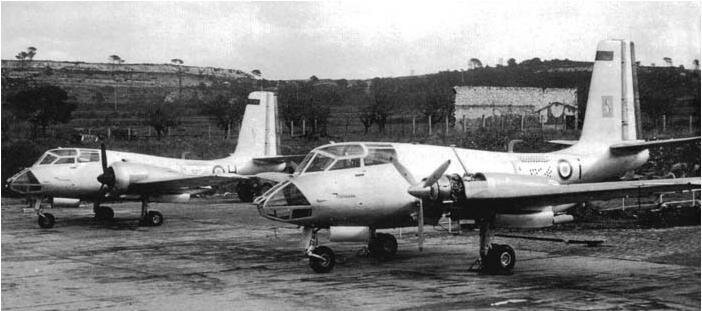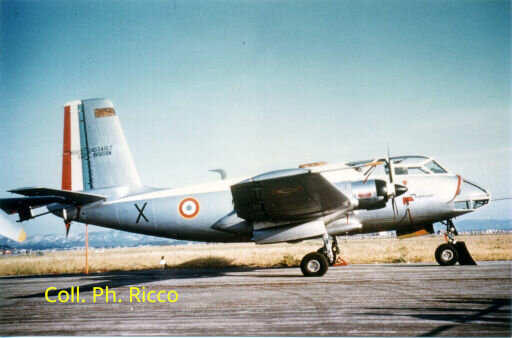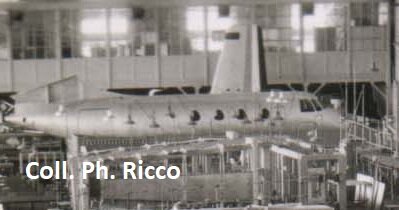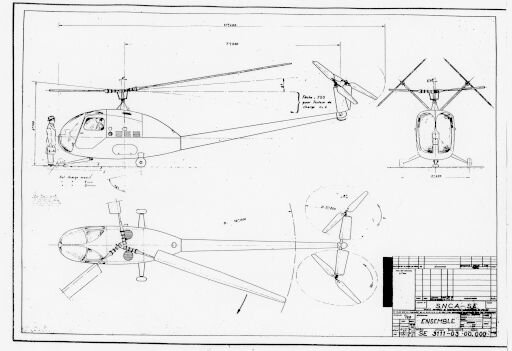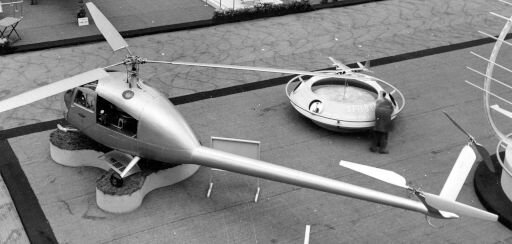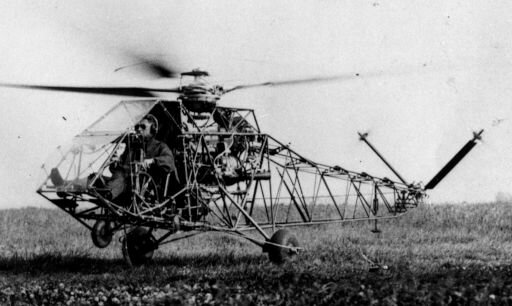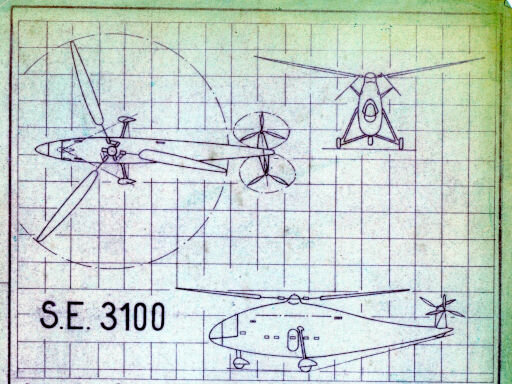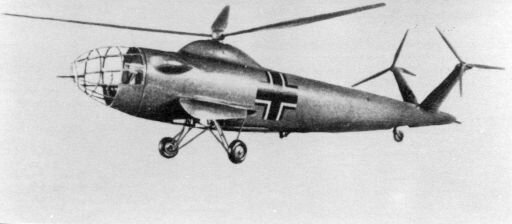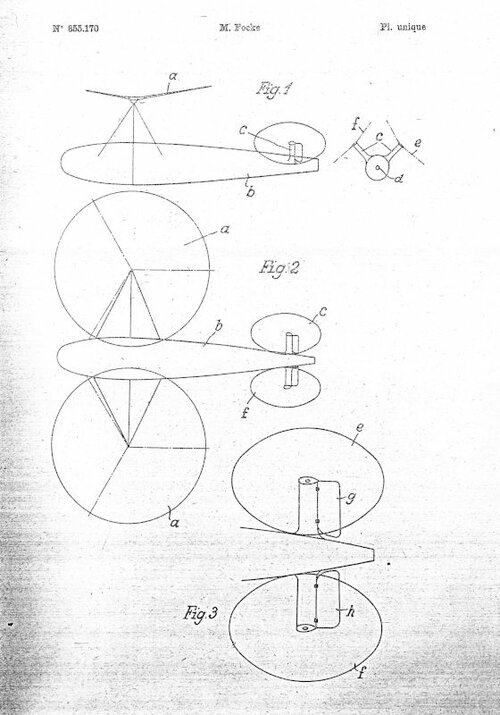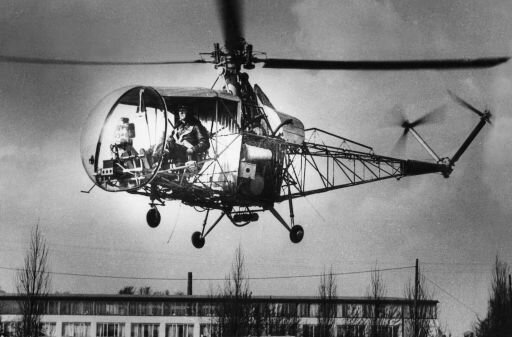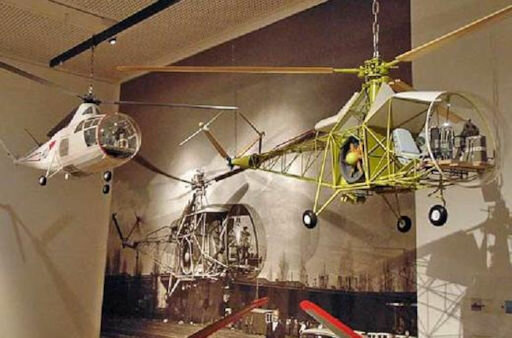English translation of the French text describing the SE-2100 in post #81.
A little-known flying wing: the SE-2100
Several flying wing projects were studied by the SNCASE design offices in Toulouse and Marignane
in the period from the occupation to the early 1950s. These projects include fighter, bomber, and
transport. Most did not leave the drawing board and fortunately for some which seem to us today
to be unrealistic, even amusing, utopias. Only one of these projects was completed and tested in
flight: the SE-2100, the history of which we will present, at least what we know about it because
the sources are rare and sometimes contradictory. But the plane is nice and deserves a little souvenir.
The model of the plane
In 1943, a two-seater training program was submitted to several French manufacturers. SNCASE responded
with two very similar projects, the SE-2300 and SE-2310, inspired in their forms by the Dewoitine 520
fighter. After the war they participated in a competition whose winner was the Nord 1201 Norécrin which
experienced series production.
Profile view of the SE-2310
We can think that our flying wing was studied as an alternative, more innovative solution to this
two-seater training competition. A presentation brochure published in 1946 specified that the SE-2100
was “produced on an experimental basis and is not intended for the public in its current state”. Its
aim was to study a new formula for a passenger aircraft and placed emphasis on comfort, accessibility
and comfort of the passenger compartment. The project was certainly also intended to study the creation
of flying wing formula aircraft and swept wings and to better understand their flight characteristics,
as this brochure specifies.
The study began under the occupation and Pierre Satre is given as responsible for the project by several
documents. A patent was applied for on November 16, 1944 and it described the aircraft in detail. A wooden
moving model was built and it is this which is often presented in photos as being the real plane. It can
be recognized by the wheel fairings and the paint which seems to have been cream with red streaks, while
the real plane remained aluminum.
According to a document from the manufacturer, Pierre Nadot made the first flight on October 4, 1945, but
other sources indicate April 30, 1945. The plane seems to have made numerous flights and was presented to
the press at the end of 1945. A brochure advertising was carried out to present the advantages of the
formula and it emphasized habitability and functionality: "You enter it like a car..." There was therefore
a certain desire to develop the concept and to market.
Access to the cabin. Note the storage compartment in the door
SE-2100 prototype
In February 1947, sixteen months after the first flight, the SE-2100 was still part of the company's
projects. Management, through a note from Jacques Lecarme, director of flight tests, requested a test and
research plan. In response. a note from Pierre Nadot, head of flight tests, to Mr. Satre, head of the design
office, outlines the main axes: work on the landing gear, tests on the ailerons, wind tunnel tests,
modification of the central part of the fuselage to improve airflow, (which would have required a new design
of the fuselage), tests of high-lift devices and new fins.
Overall, it was a development plan that would have required resources and time. No follow-up was given to
this project, despite the care taken during its design and its qualities. We can think that the tourist
aviation market was not yet sufficiently developed to justify the launch of development studies for the
SE-2100 and that the flying wing concept had some detractors. The SNCASE. which was experiencing some
financial difficulties, was then oriented towards larger aircraft, such as Armagnac or Grognard and a
tourist plane would have difficulty finding its place in the organization. Plane No. 01 disappeared without
a trace, certainly at a scrap dealer near Toulouse.
Characteristics:
Wingspan: 9.89m Length: 4.92m
Empty mass: 518kg Total mass: 800kg
Wing area: 15.11m Fin Area: 1.42 square meters
Cruising speed: 198 km/h Maximum Speed: 226km/h
Range of action: 500 km Ceiling: 5000m
A 140hp Renault Bengali 4 Pei engine (from a 1946 manufacturer's manual)
Description:
The aircraft is of metal construction and uses sheet metal pressing and electric welding techniques to
reduce cost prices. The fuselage is of monocoque construction. The wing has a dihedral of 10°43 and a
sweep at the leading edge of 55°. It is equipped with a leading edge slat at the height of the ailerons.
The freestanding wing profile is derived from an Abrial profile. Part of the trailing edge can be folded
down to facilitate access to the engine. The tricycle train was still an innovation for light aircraft
at this time.
The instrumentation is very complete for the time. Half steering wheels with a horizontal axis slide in
the dashboard. The aircraft can be used as a single seater.
The cabin is accessed through two doors like in a car and the pilot or passenger will be able to board
with grace and elegance. The engine and propeller placed at the rear of the cabin increase comfort and
improve visibility compared to traditional aircraft.
François DELASALL
References:
Toulouse, Land of Flight, by Georges Baccrabère, Private publisher
Journal les Ailes n° 1020 of 1945
Manufacturer's instructions
Archives of the Air Museum
Patent of January 28, 1944
Private collection
